|
|
General: Pasaje al cielo, dar dinero a los líderes religiosos ...
Escolher outro painel de mensagens |
|
|
| De: Rolmen (Mensagem original) |
Enviado: 01/03/2022 16:07 |
|
|
 Primeira
Primeira
 Anterior
2 a 11 de 11
Seguinte
Anterior
2 a 11 de 11
Seguinte
 Última
Última

|
|
|
LOS PERDIDOS ETERNAMENTE PAPADO Y SUS ALIADOS. MASONES ATEOS JESUITAS ESPIRITISTAS HECHICEROS Apocalipsis 19:20,21 Pero la Bestia fue capturada, y con ella el falso profeta - el que había realizado al servicio de la Bestia las señales con que seducía a los que habían aceptado la marca de la Bestia y a los que adoraban su imagen - los dos fueron arrojados vivos al lago del fuego que arde con azufre.
21 Los demás fueron exterminados por la espada que sale de la boca del que monta el caballo, y todas las aves se hartaron de sus carnes Allí hay sacerdotes y prelados papistas, que dijeron ser los embajadores de Cristo y que no obstante emplearon instrumentos de suplicio inquisición , calabozos y hogueras para dominar las conciencias de su pueblo . Allí están los orgullosos pontífices que se ensalzaron por encima de Dios y que pretendieron alterar la ley del Altísimo del Sinaí sábado séptimo día . Aquellos así llamados padres de la iglesia tienen que rendir a Dios una cuenta de la que bien quisieran librarse. Demasiado tarde ven que el Omnisciente es celoso de su ley y que no tendrá por inocente al culpable de violarla. Comprenden entonces que Cristo identifica sus intereses con los de su pueblo perseguido, y sienten la fuerza de sus propias palabras: “En cuanto lo hicisteis a uno de los más pequeños de estos mis hermanos, a mí lo hicisteis”. Mateo 25:40
EL PUEBLO DE CRISTO LOS DEFENSORES DE LA SANTA BIBLIA Y DEL SANTO SABADO CASI EXTERMINADOS Una vez que Roma resolvió exterminar la secta odiada, el papa expidió una bula en que condenaba a sus miembros como herejes y los entregaba a la matanza (véase el Apéndice). No se les acusaba de holgazanes, ni de deshonestos, ni de desordenados, pero se declaró que tenían una apariencia de piedad y santidad que seducía “a las ovejas del verdadero rebaño”. Por lo tanto el papa ordenó que si “la maligna y abominable secta de malvados”, rehusaba abjurar, “fuese aplastada como serpiente venenosa” (Wylie, lib. 16, cap. 1). ¿Esperaba este altivo potentado tener que hacer frente otra vez a estas palabras? ¿Sabría que se hallaban archivadas en los libros del cielo para confundirle en el día del juicio? “En cuanto lo hicisteis a uno de los más pequeños de estos mis hermanos—dijo Jesús—, a mí lo hicisteis”. Mateo 25:40 (VM).
En aquella bula se convocaba a todos los miembros de la iglesia CATOLICA a participar en una cruzada contra los herejes. Como incentivo para persuadirlos a que tomaran parte en tan despiadada empresa, “absolvía de toda pena o penalidad eclesiástica, tanto general como particular, a todos los que se unieran a la cruzada, quedando de hecho libres de cualquier juramento que hubieran prestado; declaraba legítimos sus títulos sobre cualquiera propiedad que hubieran adquirido ilegalmente, y prometía la remisión de todos sus pecados a aquellos que mataran a cualquier hereje. Anulaba todo contrato hecho en favor de los valdenses; ordenaba a los criados de estos que los abandonasen; prohibía a todos que les prestasen ayuda de ningún tipo y los autorizaba para tomar posesión de sus propiedades” (Wylie, lib. 16, cap. 1). Este documento muestra a las claras qué espíritu satánico obraba detrás del escenario; es el rugido del dragón, y no la voz de Cristo, lo que en él se dejaba oír.
Los jefes papales no quisieron conformar su carácter con el gran modelo dado en la ley de Dios, sino que levantaron modelo a su gusto y determinaron obligar a todos a ajustarse a este porque así lo había dispuesto Roma. Se perpetraron las más horribles tragedias. Los sacerdotes y papas corrompidos y blasfemos hacían la obra que Satanás les señalara. No había cabida para la misericordia en sus corazones. El mismo espíritu que crucificara a Cristo y que matara a los apóstoles, el mismo que impulsara al sanguinario Nerón contra los fieles de su tiempo, estaba empeñado en exterminar a aquellos que eran amados de Dios. CS 73.4
Las persecuciones que por muchos siglos cayeron sobre esta gente temerosa de Dios fueron soportadas por ella con una paciencia y constancia que honraban a su Redentor. No obstante las cruzadas lanzadas contra ellos y la inhumana matanza a que fueron entregados, siguieron enviando a sus misioneros a diseminar la preciosa verdad. Se los buscaba para darles muerte; y con todo, su sangre regó la semilla sembrada, que no dejó de dar fruto. De esta manera fueron los valdenses testigos de Dios siglos antes del nacimiento de Lutero. Esparcidos por muchas tierras, arrojaron la semilla de la Reforma que brotó en tiempo de Wiclef, se desarrolló y echó raíces en días de Lutero, para seguir creciendo hasta el fin de los tiempos mediante el esfuerzo de todos cuantos estén listos para sufrirlo todo “a causa de la Palabra de Dios y del testimonio de Jesús”. Apocalipsis 1:9 ANTES DEL REGRESO DE CRISTO ESTA BULA SATANICA SE HARA EFECTIVA SOBRE TODOS QUE SE REUCEN OBEDECER EL DOMINGO AL PAPADO CUANDO COMIENCEN A CAER LAS PLAGAS SOBRE EL PAPADO POR OBEDECER EL DOMINGO SU MARCA DE LA BESTIA LAUDATO SI SANTIFICAR LAS FIESTAS CATECISMO Y POR DECRETAR LA MUERTE SOBRE EL REMANENTE DE CRISTO SU LEY DEL SINAI Y DEL SABADO SEPTIMO DIA.
|
|
|
|
|
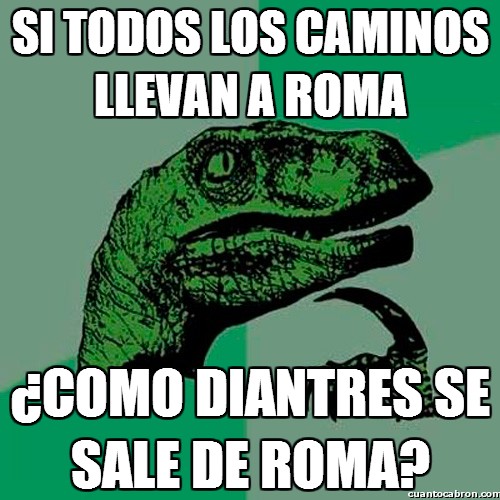      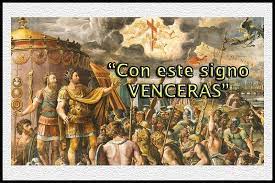 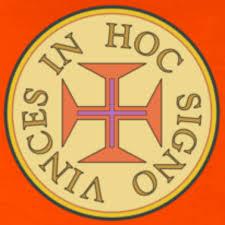

https://social.vcoins.com/twih/arch-constantine-july-25-315/
El Arco de Constantino. 25 de julio de 315.
El Arco de Constantino se erigió para conmemorar la victoria de Constantino I sobre Majencio en el Puente Milvio que tuvo lugar el 28 de octubre de 312.
La Batalla tomó su nombre del Puente Milvio , una ruta importante sobre el Tíber . Constantino ganó la batalla y emprendió el camino que lo llevó a terminar con la Tetrarquía y convertirse en el único gobernante del Imperio Romano . Maxentius se ahogó en el Tíber durante la batalla; su cuerpo fue luego sacado del río y decapitado, su cabeza desfiló por las calles de Roma al día siguiente de la batalla.
Según cronistas como Eusebio de Cesarea y Lactancio , la batalla marcó el comienzo de la conversión de Constantino al cristianismo . Eusebio de Cesarea cuenta que Constantino y sus soldados tuvieron una visión enviada por el Dios cristiano . Esto se interpretó como una promesa de victoria si el signo de Chi-Rho , las dos primeras letras del nombre de Cristo en griego , se pintaba en los escudos de los soldados. El Arco de Constantino, erigido en celebración de la victoria, ciertamente atribuye el éxito de Constantino a la intervención divina ; Sin embargo, el monumento no muestra ningún simbolismo abiertamente cristiano .
Aunque está dedicado a Constantino, gran parte del material decorativo incorporó trabajos anteriores de la época de los emperadores Trajano , Adriano y Marco Aurelio , y por lo tanto es un collage . El último de los arcos triunfales existentes en Roma, también es el único que hace un uso extensivo de la espolia , reutilizando varios relieves importantes de los monumentos imperiales del siglo II , que dan un llamativo y famoso contraste estilístico con la escultura recién creada para el arco .
Cualesquiera que sean las fallas de Maxentius, su reputación en Roma estuvo influenciada por sus contribuciones a la construcción pública . En el momento de su acceso al trono en 306, Roma se estaba volviendo cada vez más irrelevante para el gobierno del imperio, la mayoría de los emperadores eligieron vivir en otros lugares y se centraron en defender los frágiles límites , donde con frecuencia fundaron nuevas ciudades. Este factor contribuyó a su capacidad para tomar el poder. Por el contrario, Maxentius se concentró en restaurar la capital , siendo su epíteto conservator urbis suae (preservador de su ciudad). Así, Constantino fue percibido, entre otras cosas, como el deponente de uno de los mayores benefactores de la ciudad y necesitaba adquirir legitimidad. Mucha controversia ha rodeado el mecenazgo de las obras públicas de este período. El filósofo alemán Walter Benjamin observó que la historia se ve a través de los ojos del vencedor , y Constantino y sus biógrafos no fueron una excepción. Emitiendo una damnatio memoriae , se dispuso a borrar sistemáticamente la memoria de Majencio. En consecuencia, sigue existiendo una incertidumbre considerable con respecto al patrocinio de los edificios públicos de principios del siglo IV, incluido el Arco de Constantino, que originalmente pudo haber sido un Arco de Majencio .
 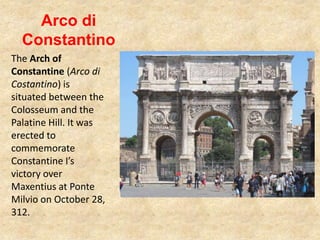    
|
|
|
|
|

Jordan River (Utah)
From Wikipedia, the free encyclopedia
The Jordan River, in the state of Utah, United States, is a river about 51 miles (82 km) long. Regulated by pumps at its headwaters at Utah Lake, it flows northward through the Salt Lake Valley and empties into the Great Salt Lake. Four of Utah's six largest cities border the river: Salt Lake City, West Valley City, West Jordan, and Sandy. More than a million people live in the Jordan Subbasin, part of the Jordan River watershed that lies within Salt Lake and Utah counties. During the Pleistocene, the area was part of Lake Bonneville.
Members of the Desert Archaic Culture were the earliest known inhabitants of the region; an archaeological site found along the river dates back 3,000 years. Mormon pioneers led by Brigham Young were the first European American settlers, arriving in July 1847 and establishing farms and settlements along the river and its tributaries. The growing population, needing water for drinking, irrigation, and industrial use in an arid climate, dug ditches and canals, built dams, and installed pumps to create a highly regulated river.
Although the Jordan was originally a cold-water fishery with 13 native species, including Bonneville cutthroat trout, it has become a warm-water fishery where the common carp is most abundant. It was heavily polluted for many years by raw sewage, agricultural runoff, and mining wastes. In the 1960s, sewage treatment removed many pollutants. In the 21st century, pollution is further limited by the Clean Water Act, and, in some cases, the Superfund program. Once the home of bighorn sheep and beaver, the contemporary river is frequented by raccoons, red foxes, and domestic pets. It is an important avian resource, as are the Great Salt Lake and Utah Lake, visited by more than 200 bird species.
Big Cottonwood, Little Cottonwood, Red Butte, Mill, Parley's, and City creeks, as well as smaller streams like Willow Creek at Draper, Utah, flow through the sub-basin. The Jordan River Parkway along the river includes natural areas, botanical gardens, golf courses, and a 40-mile (64 km) bicycle and pedestrian trail, completed in 2017.[6]
The Jordan River is Utah Lake's only outflow. It originates at the northern end of the lake between the cities of Lehi and Saratoga Springs. It then meanders north through the north end of Utah Valley for approximately 8 miles (13 km) until it passes through a gorge in the Traverse Mountains, known as the Jordan Narrows. The Utah National Guard base at Camp Williams lies on the western side of the river through much of the Jordan Narrows.[7][8] The Turner Dam, located 41.8 miles (67.3 km) from the river's mouth (or at river mile 41.8) and within the boundaries of the Jordan Narrows, is the first of two dams of the Jordan River. Turner Dam diverts the water to the right or easterly into the East Jordan Canal and to the left or westerly toward the Utah and Salt Lake Canal. Two pumping stations situated next to Turner Dam divert water to the west into the Provo Reservoir Canal, Utah Lake Distribution Canal, and Jacob-Welby Canal. The Provo Reservoir Canal runs north through Salt Lake County, Jacob-Welby runs south through Utah County. The Utah Lake Distribution Canal runs both north and south, eventually leading back into Utah Lake.[9] Outside the narrows, the river reaches the second dam, known as Joint Dam, which is 39.9 miles (64.2 km) from the river's mouth. Joint Dam diverts water to the east for the Jordan and Salt Lake City Canal and to the west for the South Jordan Canal.[10][11][12]
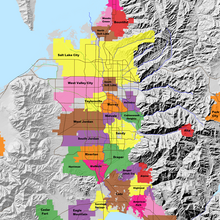
Map of the Salt Lake Valley
The river then flows through the middle of the Salt Lake Valley, initially moving through the city of Bluffdale and then forming the border between the cities of Riverton and Draper.[7] The river then enters the city of South Jordan where it merges with Midas Creek from the west. Upon leaving South Jordan, the river forms the border between the cities of West Jordan on the west and Sandy and Midvale on the east. From the west, Bingham Creek enters West Jordan. Dry Creek, an eastern tributary, combines with the main river in Sandy. The river then forms the border between the cities of Taylorsville and West Valley City on the west and Murray and South Salt Lake on the east. The river flows underneath Interstate 215 in Murray. Little and Big Cottonwood Creeks enter from the east in Murray, 21.7 miles (34.9 km) and 20.6 miles (33.2 km) from the mouth respectively. Mill Creek enters on the east in South Salt Lake, 17.3 miles (27.8 km) from the mouth. The river runs through the middle of Salt Lake City, where the river travels underneath Interstate 80 a mile west of downtown Salt Lake City and again underneath Interstate 215 in the northern portion of Salt Lake City. Interstate 15 parallels the river's eastern flank throughout Salt Lake County. At 16 miles (26 km) from the mouth, the river enters the Surplus Canal channel. The Jordan River physically diverts from the Surplus Canal through four gates and heads north with the Surplus Canal heading northwest. Parley's, Emigration, and Red Butte Creeks converge from the east through an underground pipe, 14.2 miles (22.9 km) from the mouth.[7] City Creek also enters via an underground pipe, 11.5 miles (18.5 km) from the river's mouth. The length of the river and the elevation of its mouth varies year to year depending on the fluctuations of the Great Salt Lake caused by weather conditions. The lake has an average elevation of 4,200 feet (1,300 m) which can deviate by 10 feet (3.0 m).[3] The Jordan River then continues for 9 to 12 miles (14 to 19 km) with Salt Lake County on the west and North Salt Lake and Davis County on the east until it empties into the Great Salt Lake.[7][8][11]
Discharge[edit]
The United States Geological Survey maintains a stream gauge in Salt Lake City that shows annual runoff from the period 1980–2003 is just over 150,000 acre-feet (190,000,000 m3) per year or 100 percent of the total 800,000 acre-feet (990,000,000 m3) of water entering the Jordan River from all sources. The Surplus Canal carries almost 60 percent of the water into the Great Salt Lake, with various irrigation canals responsible for the rest. The amount of water entering the Jordan River from Utah Lake is just over 400,000 acre-feet (490,000,000 m3) per year. Inflow from the 11 largest streams feeding the Jordan River, sewage treatment plants, and groundwater each account for approximately 15 percent of water entering the river.[13]
Watershed[edit]
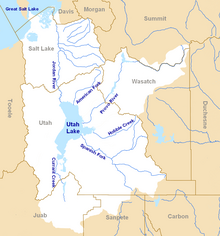
Map of the entire Jordan River Basin
|
|
|
 Primeira
Primeira
 Anterior
2 a 11 de 11
Seguinte
Anterior
2 a 11 de 11
Seguinte
 Última
Última

|
|
| |
|
|
©2025 - Gabitos - Todos os direitos reservados | |
|
|

